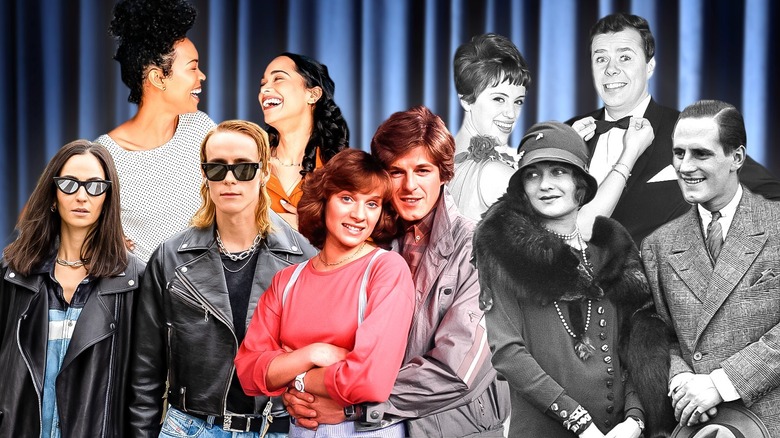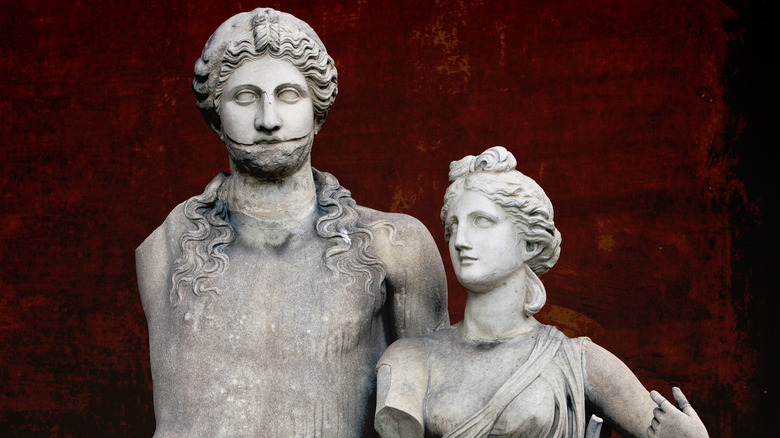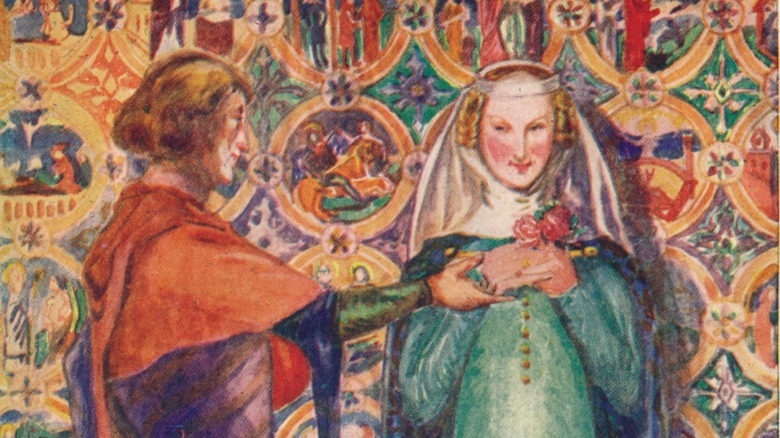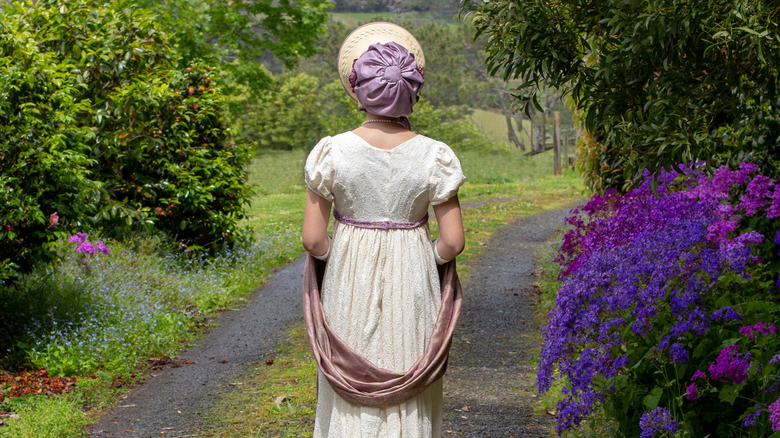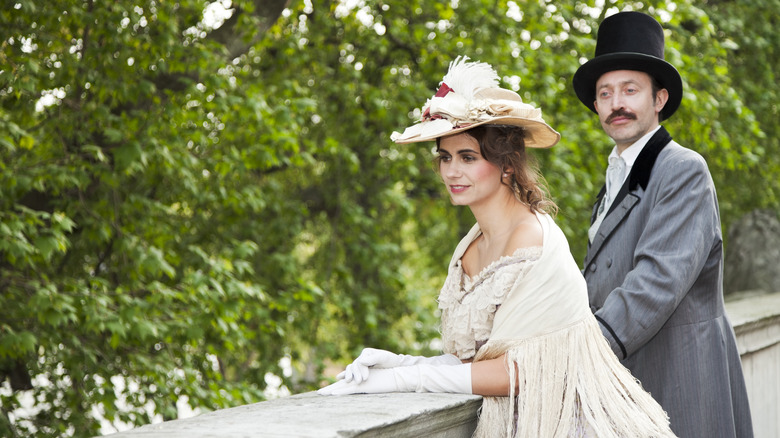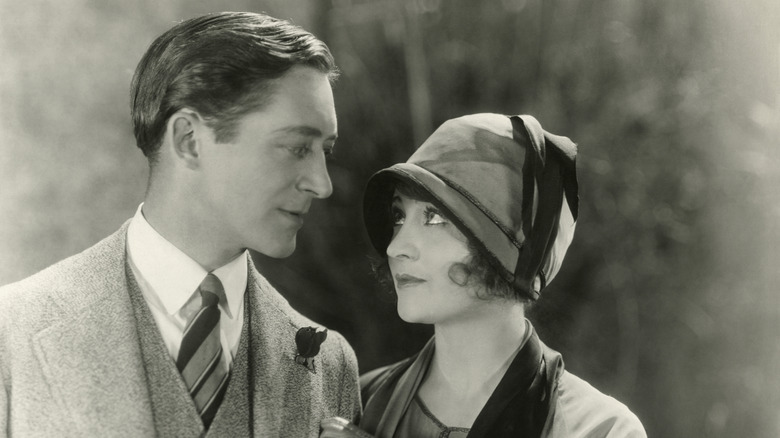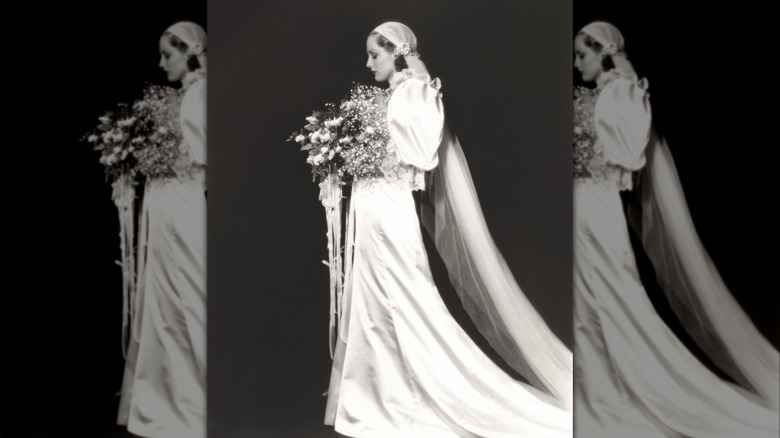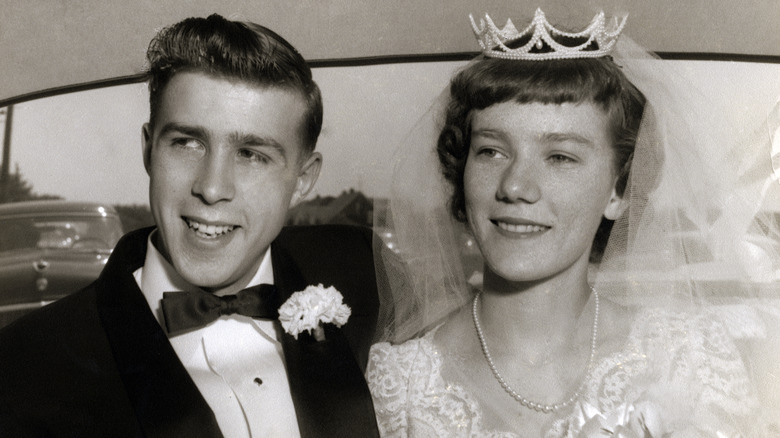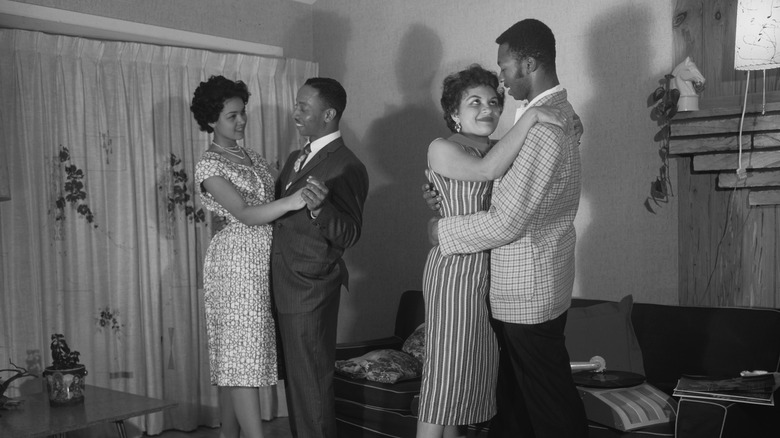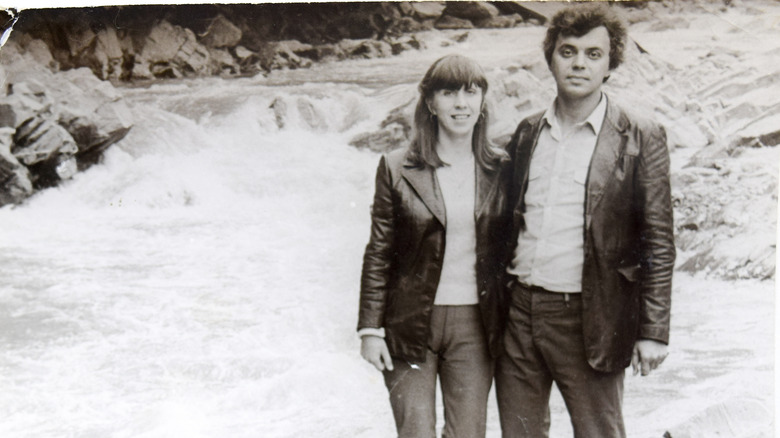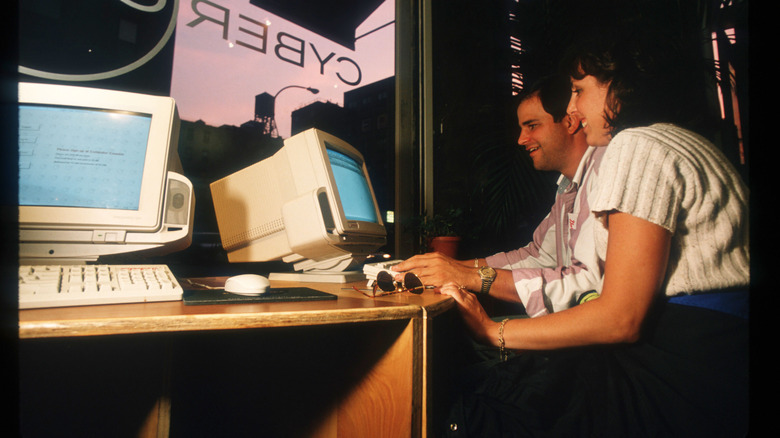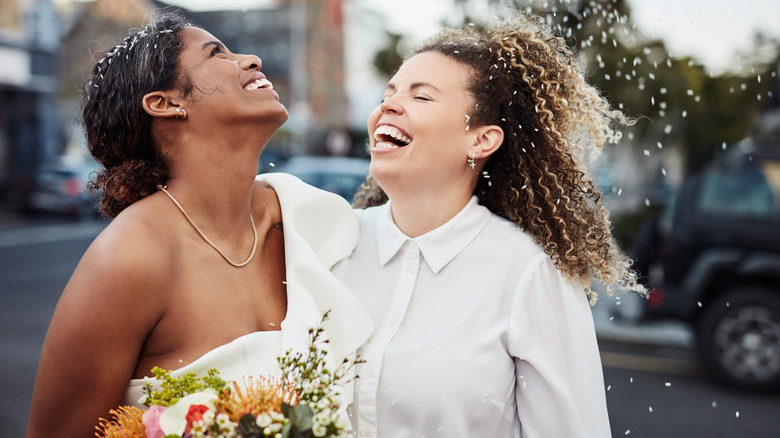The Evolution Of Women's Ideal Partners In Relationships
From rugged pirates on the big screen to the action heroes of romance novels, the concept of an 'ideal partner' has long come in many shapes and sizes. While physical appearance and personal preferences play an important role, finding a future partner who shares your interests and values is also likely a priority. Throughout history, traits such as a good sense of humor, confidence, and kindness have been desirable. However, women's relationship preferences and their perception of an ideal partner have shifted significantly over the years.
In the past, societal pressures often governed a woman's expectations for a partner, such as religious commitments in the Middle Ages or covert Victorian flirting. However, in recent decades, women have gained greater autonomy, allowing them to have more control over their dating choices and redefine what an 'ideal' relationship should look like. Whether seeking a long-term commitment or using a dating app to hunt for a casual connection, the concept of true love and finding 'the one' has remained an important, if not always achievable, aspect of how women form relationships for centuries.
Romance in ancient times
While the dating habits of ancient Romans may seem like a distant past, there were still expectations regarding the ideal partner for women during that time. Women were generally expected to marry in order to produce an heir for their husbands. "Marriages were arranged, and all about wealth and status and power and keeping the family line going," Barbara Gold, a professor of classics at Hamilton College, explained to Live Science. "There never would have been a marriage for the Romans that was based on any kind of erotic sexual attraction."
Wives lacked the same legal rights as independent citizens when it came to voting, working, and owning property. Although divorce was acceptable, women still had limited autonomy in making decisions after marriage. They could even be remarried against their will by a male relative if a more affluent prospective partner came along. Despite the Romans' reputation for their relaxed attitudes toward sex, women were strictly forbidden from engaging in extramarital affairs, unlike men who were often encouraged to do so.
Nevertheless, both men and women were expected to embody similar values of virtue as the ideal partner. Prioritizing chastity, morality, and modesty was of utmost importance. Any social interaction between the sexes before marriage was supervised and the concept of going on a date or hanging out in a modern sense would have been considered completely inappropriate.
Courtly love in the Middle Ages
When thinking about the Middle Ages and medieval love, heroic knights and mythical tales of rescue and adventure often come to mind. While the reality of the Middle Ages lacked dragons and magic commonly found in literature, the concept of romantic love greatly influenced the ideal qualities expected in a partner.
Arranged marriages were prevalent during this time, and a woman's behavior as a wife was strictly guided by religious teachings. However, morality traits and chivalry were still highly valued. An ideal partner was expected to possess virtues such as truth, sincerity, and commitment to the marriage. Many women didn't meet their partners until after the engagement, yet still hoped for their partners to be affectionate and protective like the heroes in folk tales.
In addition to promoting more romantic ideas of love, this focus on the honor and passion of marriage unintentionally elevated the status of women. Instead of seeking possessiveness and ownership, women desired partners who were willing to give them more control, both within the household and their marriage.
Regency era rules
Referring to the early 19th century, dating during the Regency era was equally as complicated as the modern dating scene when it came to what a woman desired in a partner. For a young, high-class woman, getting married was an important validation. However, to find a suitable match and discover 'the one', she had to adhere to numerous rules. Getting to know someone was particularly challenging, as being alone with a gentleman before marriage was strictly prohibited. In fact, a woman's reputation would be permanently tarnished if she was caught alone or taking a walk with a suitor without proper supervision.
To express interest and flirt with someone, a woman had to be skilled in small acts of affection. This emphasis on social etiquette and subtle romance meant that the ideal partner needed to be observant, patient, and willing to engage in extended periods of courtship. While excessive physicality was frowned upon, putting a shawl around a woman's shoulders or selecting her as a dance partner at a grand ball were considered positive signs during the Regency era. These small gestures allowed a woman to gain insights into the personality of her potential love interest without violating any unwritten social norms.
Victorian era flirting
During the Victorian era, finding the ideal partner required effort and adherence to social norms. While spending unsupervised time with a man was mostly forbidden, engaged couples had more freedom in their interactions. Engagement periods were typically long, providing an opportunity for partners to get to know each other without breaking social etiquette rules.
However, reaching the engagement stage was not without its challenges. It was common for a woman to reject a suitor's proposal, even if she was interested, as a way to test his dedication. The ideal partner during this period was someone who put in significant effort to impress their partner and correctly interpret her signals.
Unlike today, direct displays of affection and asking someone on a date were uncommon. Women relied on subtle methods of flirting to gauge their love interest's suitability. This included the exchange of personal cards, fan signals, flower languages, and the use of small gifts to indicate their interest in getting to know their partner better.
The 1920s: changing romantic etiquette
The 1920s witnessed significant changes for women, particularly in their expectations of a romantic partner. During the 'Jazz Age', the nightlife scene for young people flourished. Instead of relying on arranged marriages and limited social networks, women had the opportunity to meet potential partners in social settings. This newfound freedom allowed them to have more control over the traits, interests, and values they desired in a partner.
The increased popularity of dancing, smoking, and discreet consumption of alcohol during the Prohibition era reflected a more liberated social environment for women. With the '20s embracing a more relaxed attitude towards physical affection and active dating, an ideal partner was someone who embraced adventure and spontaneity.
Rather than seeking protection, many women sought partners who were comfortable with their presence in social spaces like bars and dance clubs. Public displays of affection, such as kissing and holding hands, were not only accepted but also expected from committed couples. However, double standards persisted, as premarital sex and adultery were still heavily stigmatized for women, despite being commonly practiced by men.
Independence during the '30s and '40s
If the '20s were all about adventure and socialization, the '30s and '40s marked a more somber period for romance. Due to the ongoing threat of World War II and military commitments, many women found their pool of potential partners greatly reduced. Those who had found a partner were more willing to commit to marriage with a shorter engagement period – it wasn't uncommon for a woman's potential spouse to be away for months at a time. An ideal partner during the '30s and '40s was someone willing to commit to a long-term relationship and potentially a long-distance marriage.
Despite the danger of war, women in this period still found time for love and romantic gestures. The '30s and '40s marked a renewed appreciation for celebrating love and finding happiness with your partner whenever possible. When detailing her parents' wartime marriage with The Guardian, Catherine Berry discussed how, despite the pressure of rationing, it was still important to follow traditions such as wearing a white wedding gown. "They wanted to do things properly, and also have something joyful among all the hardship and worry," she described. Alongside wartime changes, this was the era of greater independence for many women, as they stepped into the world of work for the first time in full force.
Domestic bliss?: finding an ideal partner in the '50s
Romance in the '50s is often associated with building the nuclear family, white picket fences, and domestic relations. However, the concept of what a woman's ideal partner should be shifted a lot during this time. While family values were important, the changes to gender roles that World War II brought meant that women began to look beyond this in terms of what they wanted from a partner.
Within the workforce, many women felt trapped by the expectations of household duties. A partner looking for an ideal woman who wanted only a conventional marriage began to seem less ideal. "You do feel nice when you get your bit of money on a Friday and know that you've earned it," one 1950s housewife described to researchers studying this new wave of working women (via History Today).
In terms of the ideal partner for a '50s woman, the desired traits were split. Many women wanted someone who was financially responsible and able to care for his family. Additionally, some women wanted a partner who was more relaxed regarding gender roles, open to helping with household chores, and willing to allow them more autonomy.
Free love in the '60s
Compared to the 1950s, the arrival of the '60s was all about the beginnings of the sexual openness we know today, and women gaining more control over how their relationships played out. There was still a lot of social etiquette that had to be followed when dating. A fun date night would be a trip to the cinema or theatre, with physical affection mostly limited to a kiss on the cheek or hand-holding.
Alongside this, the dating landscape for women was undergoing a rapid change, mostly thanks to the first widely available birth control pill being introduced during this decade. Although many people were still unaware of how contraception worked, those in the know enjoyed greater sexual freedom with less risk of unintended consequences.
Sexual compatibility, combined with personality traits, appearance, and similar interests, was now another important aspect of finding 'the one'. The ideal partner was imagined as someone who was open to their wife or girlfriend making their own choices. Although kissing and cuddling weren't acceptable in every setting, women were looking for someone who was more relaxed about expressing their love in a physical sense.
Casual romance in the '80s
A decade of lycra, legwarmers, and big hair, the '80s brought about the continued popularity of casual relationships and a more relaxed attitude toward love. Gone were the days of fan signals, chaperoned walks, and catching your partner's attention with subtle gestures — this period was all about embracing the beginnings of what we call 'hookup culture'. With many of the past taboos around sex gone, one-night stands were an acceptable part of the dating scene, as well as playing the field and casually dating multiple people.
Although judgment towards women who engaged in these behaviors still existed, both men and women began to enjoy more casual dating experiences — the ideal partner was expected to behave accordingly. Being adventurous, fun-loving, and unafraid to show affection for your partner in public were desirable traits for many women looking for their ideal partner. It wasn't until the emergence of the AIDS epidemic, however, that fears around casual sex and sexual openness were amplified once again, and the discussion around one-night stands became more critical.
The '90s: online connections
The 1990s brought about the rise of the internet, and with it, the first beginnings of what you now know as online dating. While apps like Tinder and Hinge were still a long way off, the ability to form connections through chat rooms and messaging services like AOL and email shook up the dating world. This technological advancement not only made long-distance relationships much easier to manage but also changed the personality traits that were most desirable in a potential partner.
Instead of relying solely on physical contact and appearance, traits like being a good communicator and responding promptly to messages became increasingly important for those seeking 'the one' through email or chat rooms. However, some dating etiquette from previous generations still held significance. Before exchanging emails or usernames with a potential love interest, it was likely that you would have to meet them in a more traditional setting, such as the cinema or a bar.
Swiping for love in the '00s and '10s
The 2000s and later the 2010s marked one of the biggest cultural shifts in how dating was approached in the last century or so. With the creation of apps such as Tinder and Grindr, hook-ups and one-night stands were no longer the social taboos they had been several decades ago. Thanks to the rise of smartphones and faster internet, you could swipe through a list of potential partners from the safety of your own home. Alongside this, the '00s and '10s marked a rise in the popularity of more specific online dating websites. Searching up OkCupid and eHarmony provided an online alternative to the traditional dating scene, as well as an easy way to make hunting for 'the one' more effective by coming up with a dating strategy.
For a woman on the search for her ideal partner, a whole host of new values had to be considered when talking to someone online — how good are they at keeping up with texting? Do they understand the emojis you're using? Is that picture actually real? The rise of online dating also introduced several new issues to deal with. Pretending to be someone else or breaking up with your partner with no warning are not new, but the risks of 'ghosting' and getting catfished added another layer to the wild world that is dating.
A world of choice: the ideal partner of today?
From supervised walks to jazz clubs and now Tinder, how a woman looks for the ideal partner has gone through a lot of changes. But what do these ideals look like today? Leading on from the '10s, hyper-specific dating apps and regular online messaging are now the norm. Using an app such as Bumble, HER, or Hinge, people of all sexualities, occupations, and ages can look for their perfect match and enjoy the 'talking stage' with as many different people as they want.
While date nights are still important, there's less of a need for subtlety and covert flirting as both casual relationships and long-term commitments are equally sought after. No longer limited to heterosexuality, there's now a wide range of LGBT-friendly dating apps, sites, and dating-related events for women to try out. In the 2020s, we're both looking for 'the one' but also learning how to maintain a healthy relationship when we do meet them. Nowadays, a woman's ideal partner doesn't necessarily have a specific look, but her relationship with them should be all about consent, respecting each other's boundaries, and building a bond that's both supportive and passionate.
